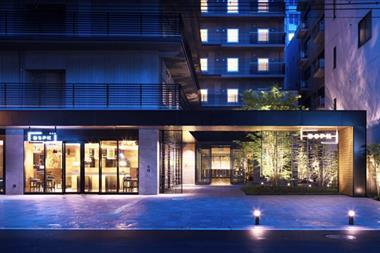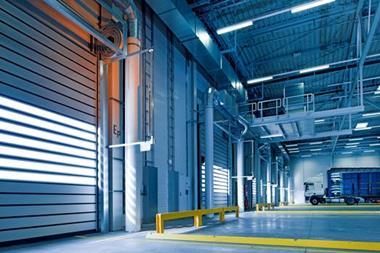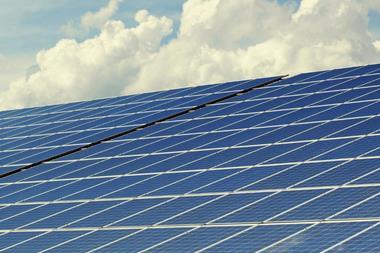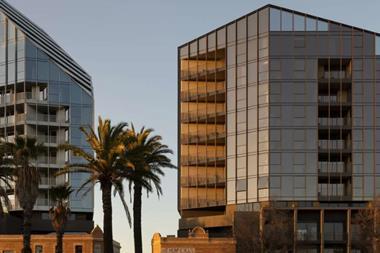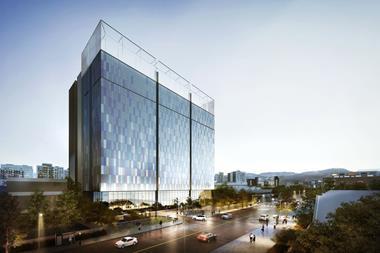Government measures protecting the population from excessive price growth have not fazed foreign investors, as Richard van den Berg and Kenneth Tsang find
On the back of robust economic growth offering a wide range of growth opportunities, China has been on the centre of the radar screen for many years. There is no end in sight to the rush of foreign capital into this fastest growing major world economy. Fixed asset investment, particularly real estate, has been strong. Real estate is perhaps one of the most popular subjects around every dinner table as the pace of both the development of the market and price level are astonishing, particularly in the eyes of the developed countries.
GDP saw an average growth of 10.4% from 2002 to 2006 while the forecast for the full year growth of 2007 is expected to reach 11.4%, according to the Economist Intelligence Unit. Despite the fact that the market has a general consensus of a relative slowdown of economic growth, the economy is still expected to see an impressive growth rate of about 8.4% from 2007 to 2011. The real estate market has developed at an increasing pace over the last decade. Development scale once seen in large cities like Shanghai or Beijing is now repeated in the second or even third tier cities in China. In 2006, total real estate investment reached $254bn (€186bn), about 17.6% of total fixed asset investment in China, a higher proportion comparing to five years ago (16.9%).
Robust economic development has brought ample new opportunities to urban Chinese residents, resulting in strong income growth. Average national income has been growing at an average of 11.4% per year for the last five years, and the highly educated group is seeing an even more awesome rate of income growth. This fuels strong demand in the private housing market as many aspire to improve their living standard from what they have inherited from the State Owned Enterprise's housing regime before the mid-1990s. Other commercial real estate sectors have been seeing rapid demand growth to cope with the growing business requirements and demand from consumers.
General population growth is not a demand driver in its own right, given the famous one-child policy limiting organic growth. Today's magic word is urbanisation, or rapid urban population growth. Brisk economic growth requires extensive labour supports at various levels. This has become one of the most important driving forces in the real estate sector as people rushed into major cities to seek the ever growing opportunities. in the next 10 years alone, it is expected that around 128m urban residents and about 69m urban households will be generated, creating significant demand for residential and commercial properties.
Such a strong economic backdrop and underlying fundamentals for rapid city development are not without their costs. The rapid development of the real estate sector and the general undersupply condition has attributed to a strong surge in the price of real estate. It is less as an issue in the commercial sector but in the residential sector, more and more of the lower income cohort is seeing an increasingly stretched situation when contemplating buying residential properties.
Maintaining a harmonious society is one of the PRC government's main objectives. It is believed that a healthy real estate market, one without excessive price growth, is one of the many ingredients of a harmonious society. Since 2005, the government has introduced various measures to curb the rapid price growth in the real estate market. However, in many parts of China the momentum did not appear to abate. Recently, the government introduced measures aimed at curbing investment momentum from foreign investors, which is seen as one of the main catalysts of increasing residential prices in China. It is understandable that these measures seem to target foreign investors as these deal often make the bigger headlines. In fact, these transactions only account for a small proportion of the market.
By and large, these government measures are an attempt to slow down the demand side (particularly speculative purchases) through more taxation, interest rate increases and stricter mortgage requirements. Some measures encourage a more balanced supply structure, while others aim to reduce the capital available to investors through higher bank's reserve ratio and limiting foreign investors to borrow offshore. This is only one of the tactics that the government has employed as part of a broader regime to tame the market.
Is this posing threats to foreign investors? Yes and no. Yes in the case of those who are banking on a more short term, opportunistic play to reap quick profit, and particularly those who lack scale in terms of strong business network, operational efficiency and genuine market knowledge.
No for those who have been committed and strategically prepared, monitoring the opportunities stemming from a strong and sustained long-term market development. The growth story for the China real estate sector is not short term.
The market is diverse in China, and there are new evolving parameters in the market that can affect the market dynamics and thus the thinking of policy makers in China. While it may be harder to get things done in the real estate sector now, it is still possible to have a long-trm foothold in the Chinese market , as long as the company is prepared to follow closely what is required by the rules and regulations.
The sector has been and will be highly monitored and scrutinised - foreign investors in particular face the most scrutiny. It is therefore paramount to understand all the do and don'ts and establish a long-term place in the market.





